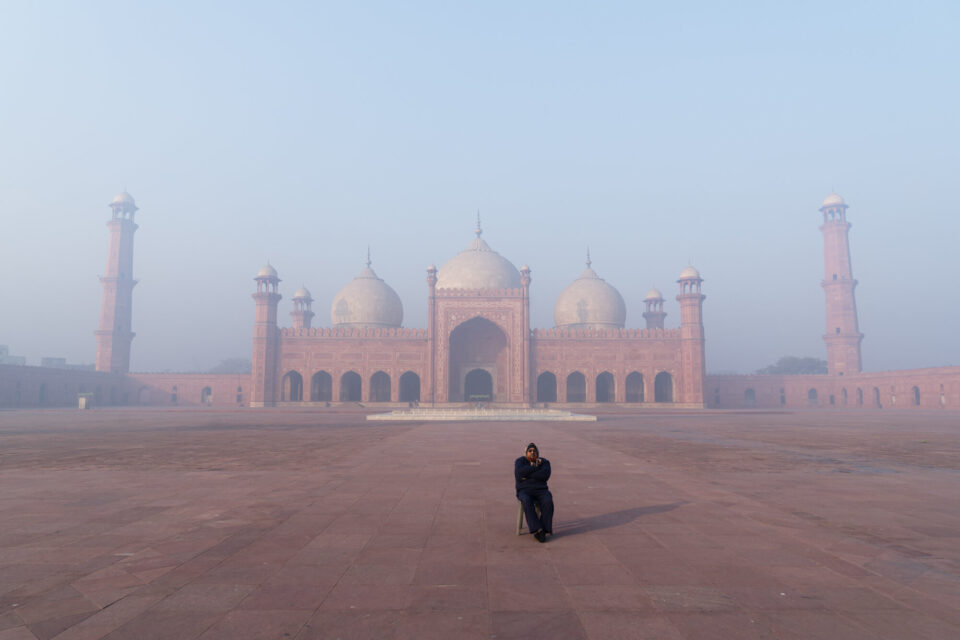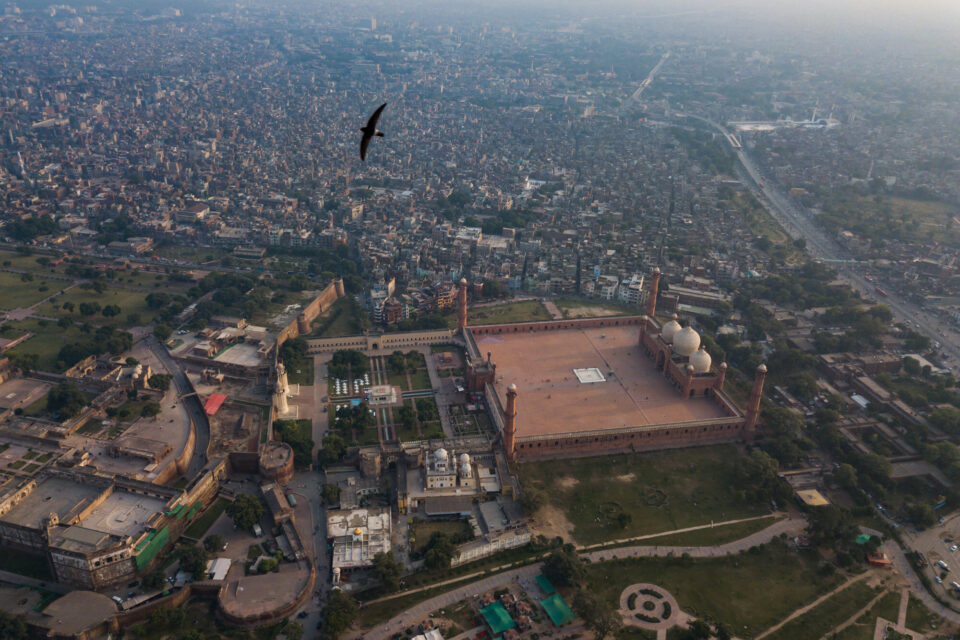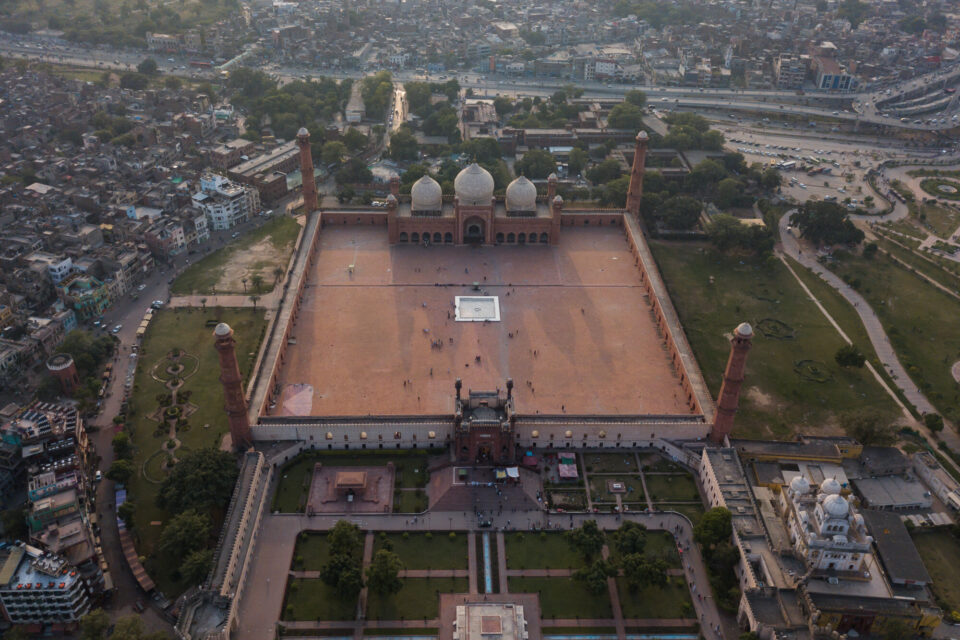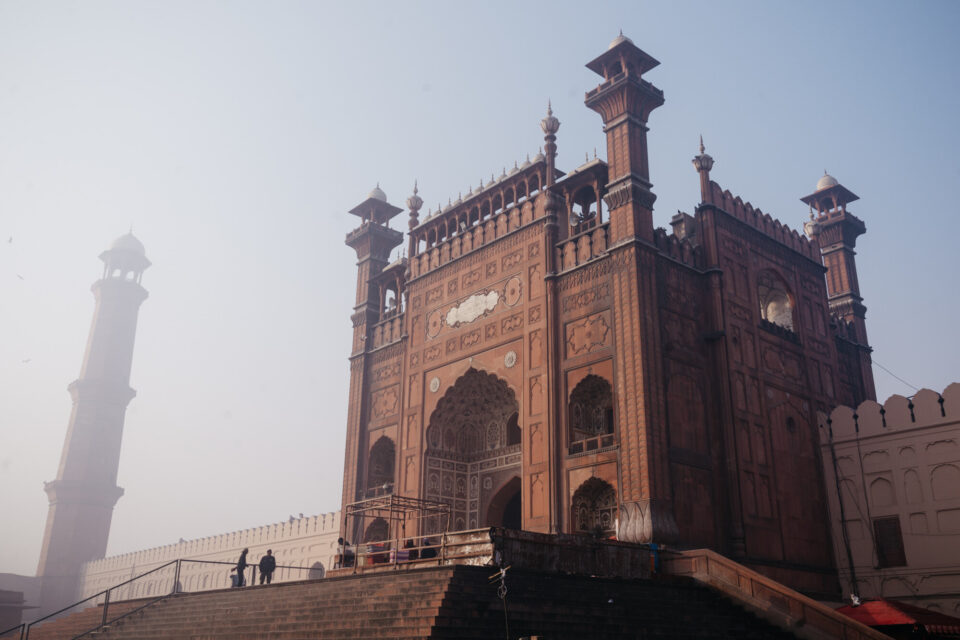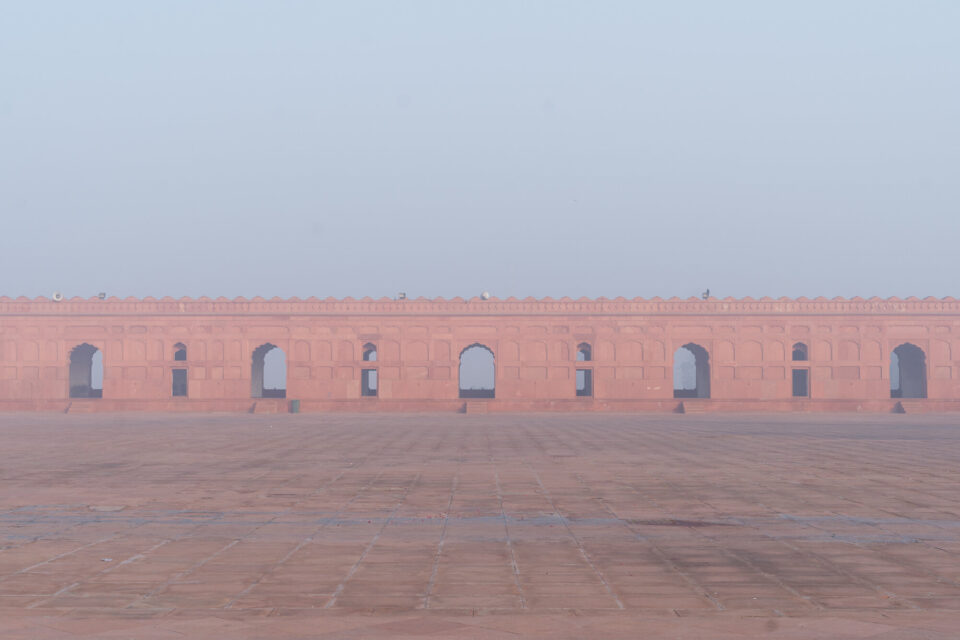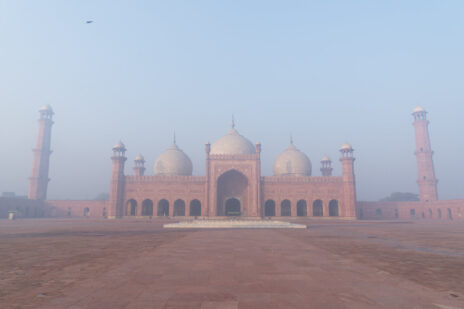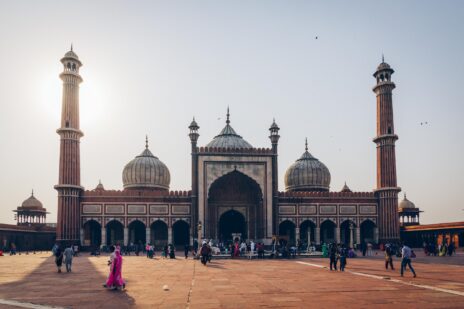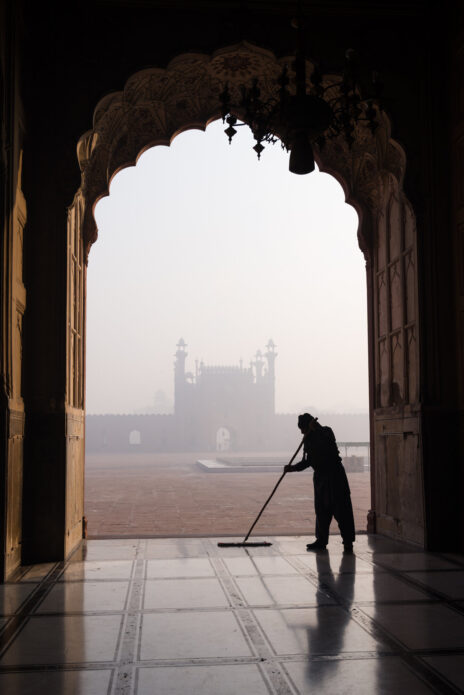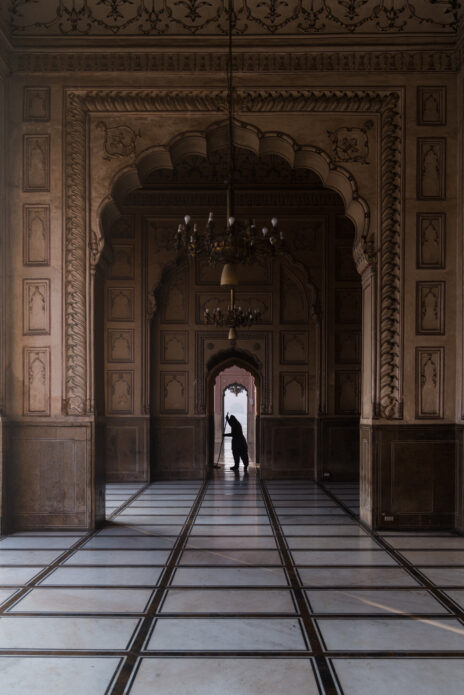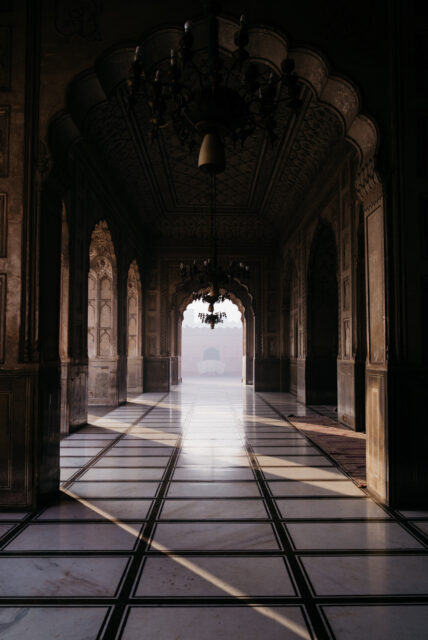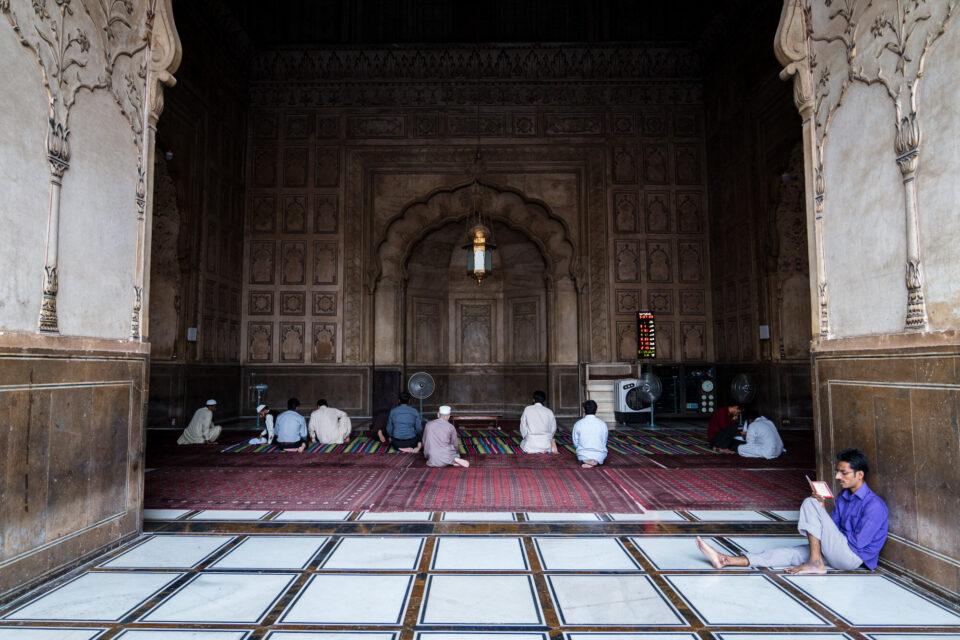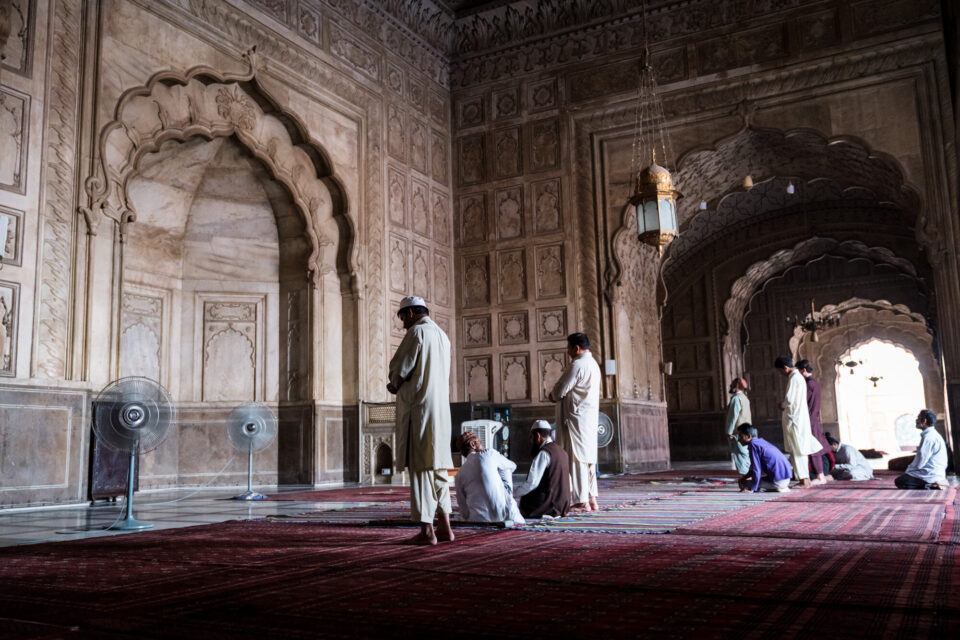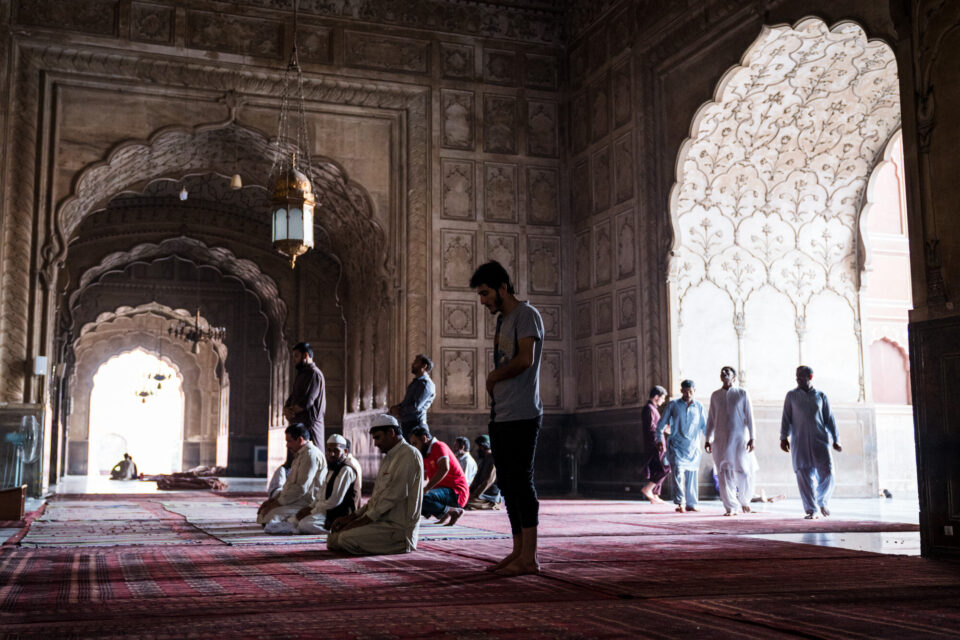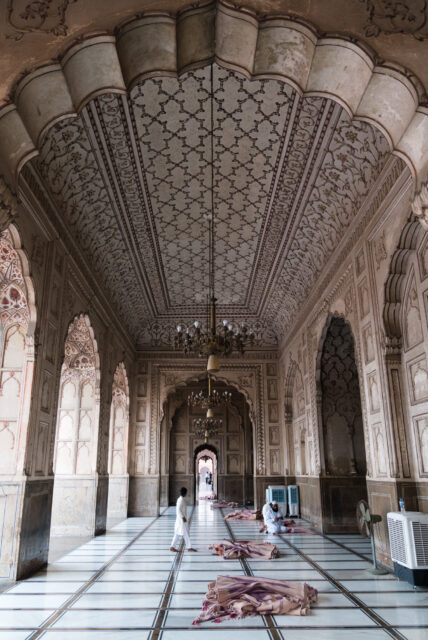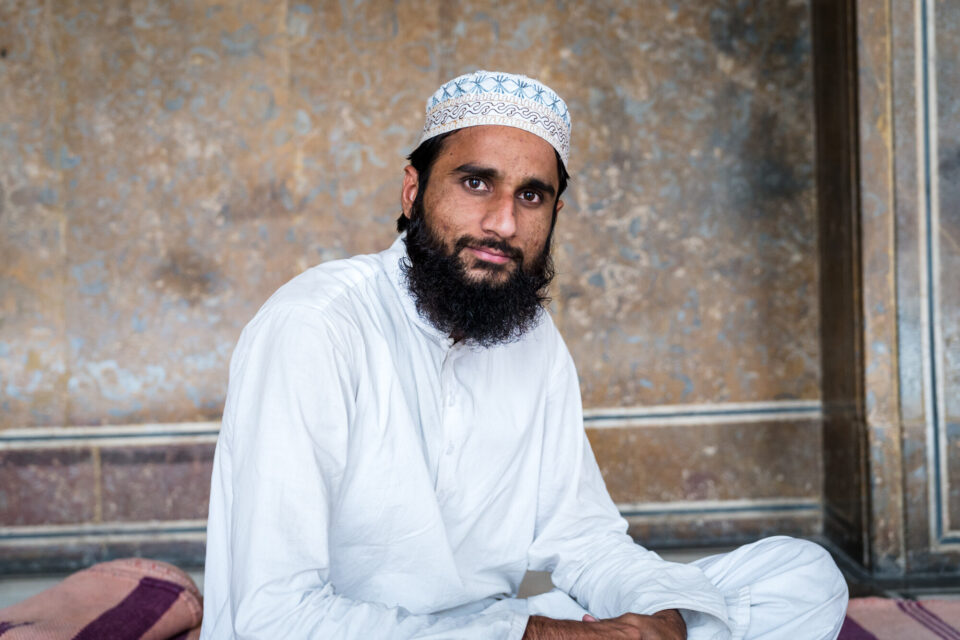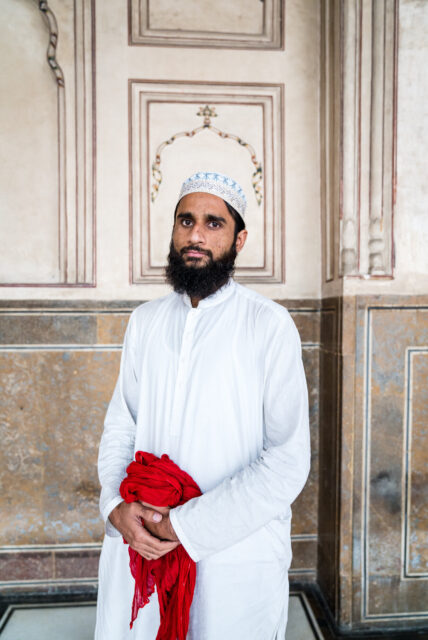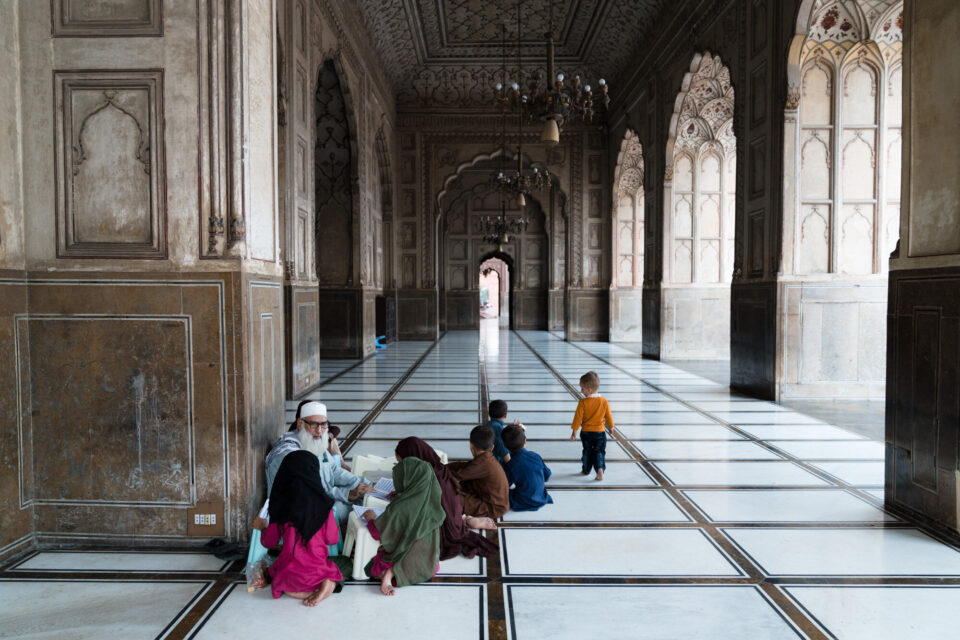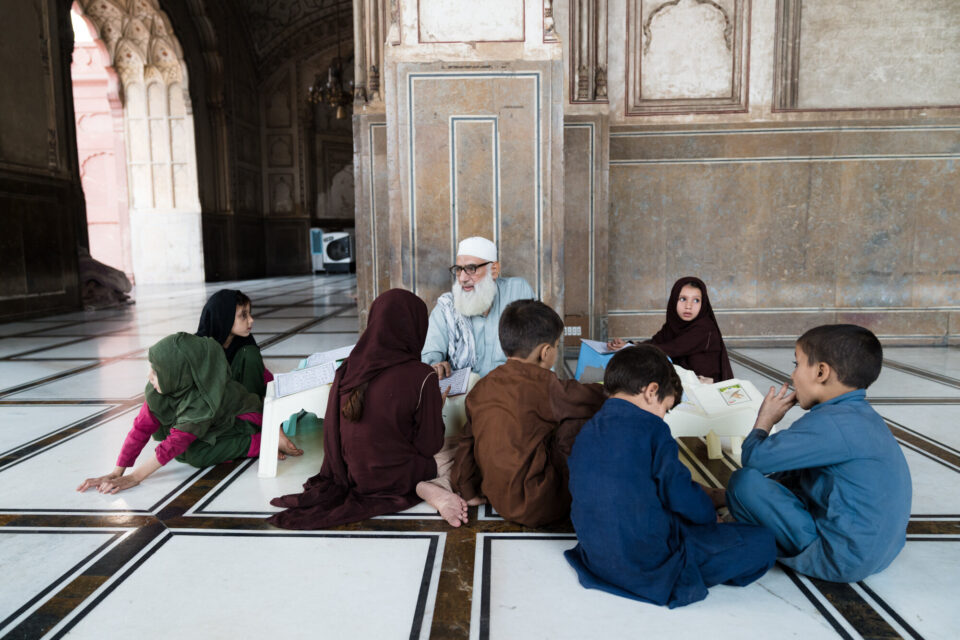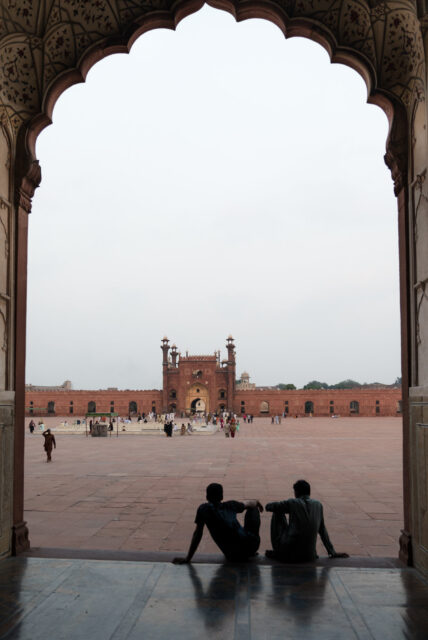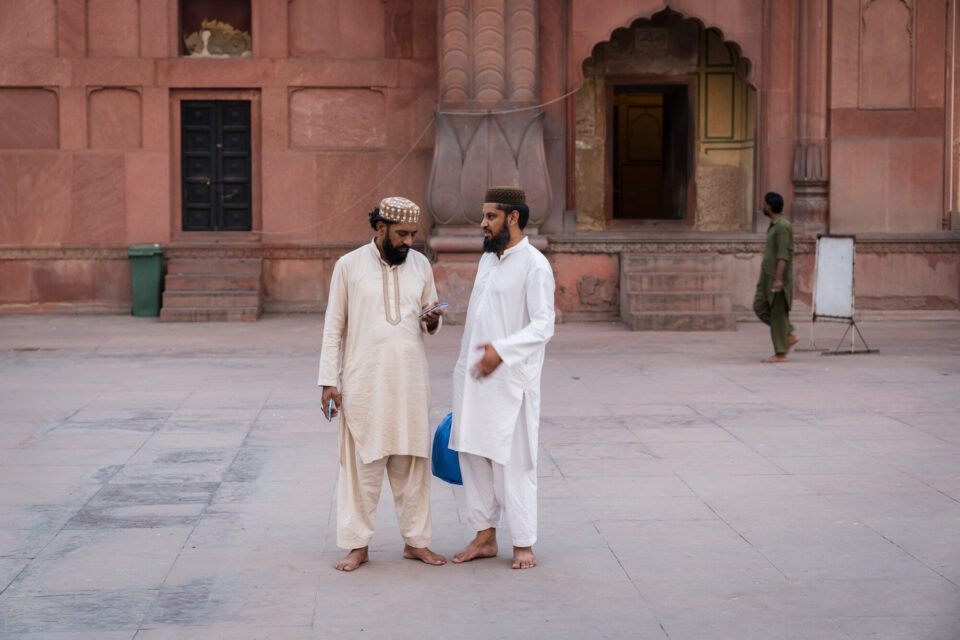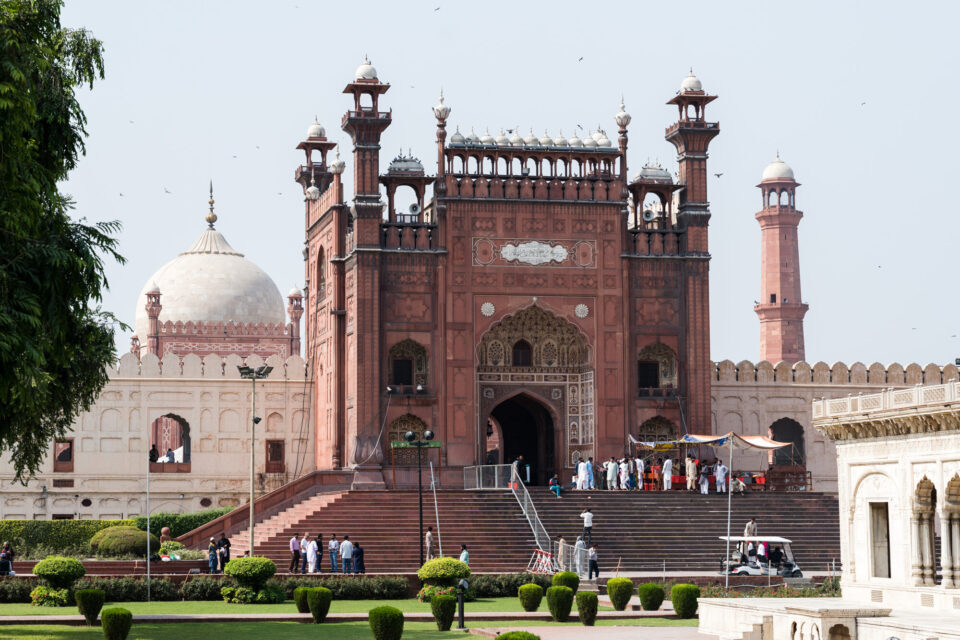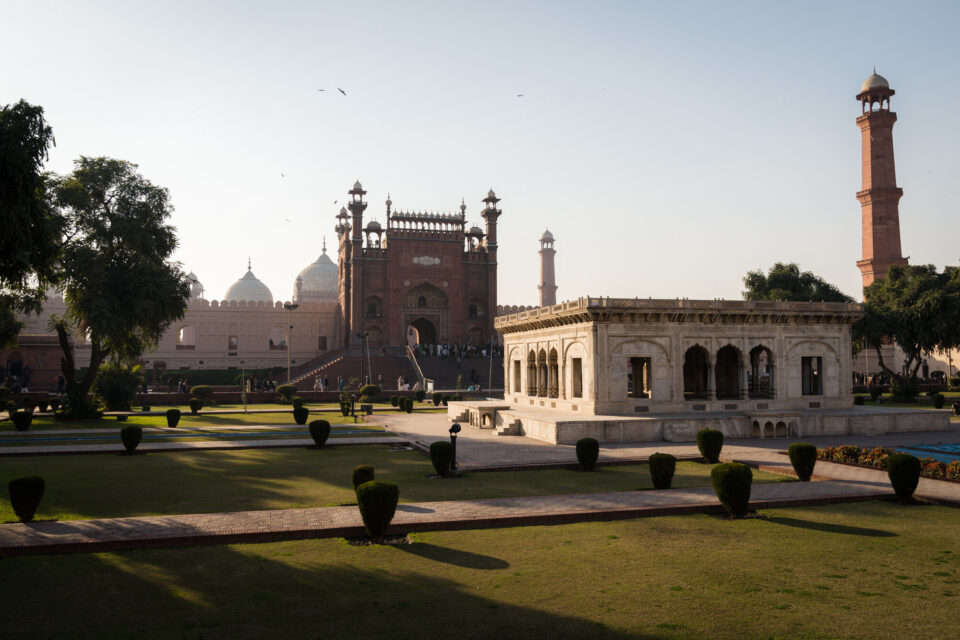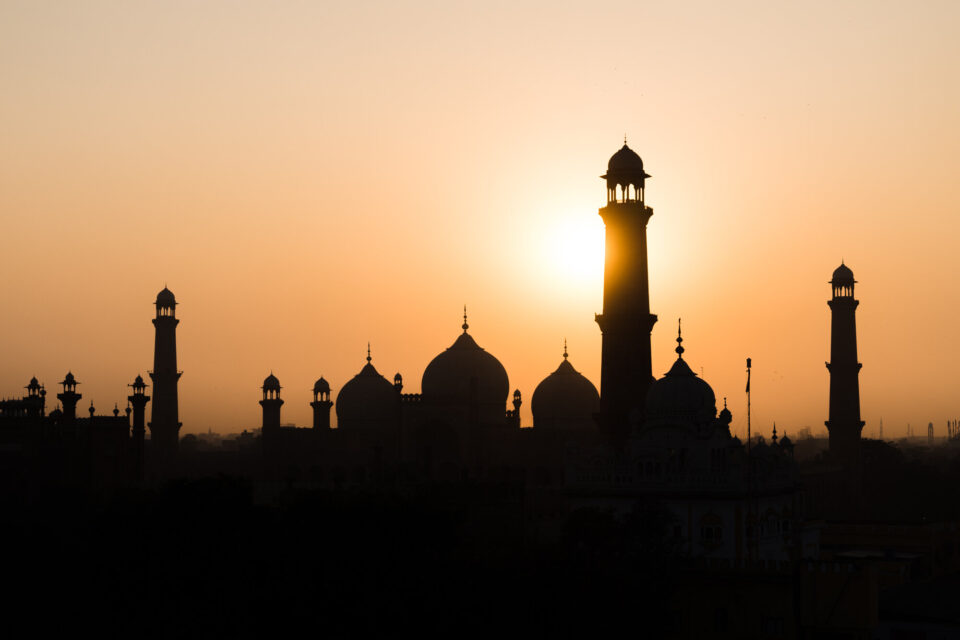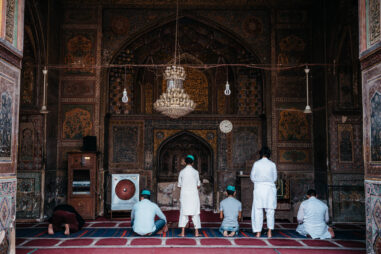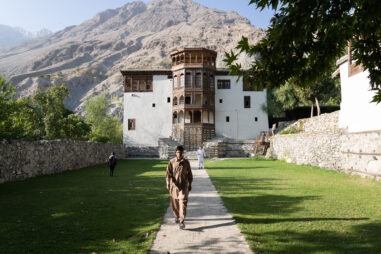
Built by Emperor Aurangzeb in 1673, the Badshahi is the largest Mughal-era mosque and is the second-largest mosque in Pakistan.
Unlike most Mughal Emperors, Aurangzeb was not a great patron of the arts. He spent most of his time focused on military conquests. This mosque was built to commemorate his campaigns in southern India, in particular against the Maratha king Shivaji.
This mosque takes its architectural cues from the Jama Mosque in Delhi (photo below) built by Aurangzeb’s father, Shah Jahan, who in turn took his architectural cues from the Persian style. Both mosques feature red sandstone with white marble inlay.
I first visited in 2018 when I went Lahore to photograph some of the Aga Khan Trust for Culture’s restoration work in the Walled City. Visiting in the early morning the mosque, crowned by its iconic onion shaped domes, was shrouded in mist with barely a soul in sight.
It was a joy exploring the mosque for an hour or so without anyone around. And equally fascinating to see it start to fill up. I missed seeing the whole courtyard full of people. That would be pretty special, especially from above. Hopefully next time.
